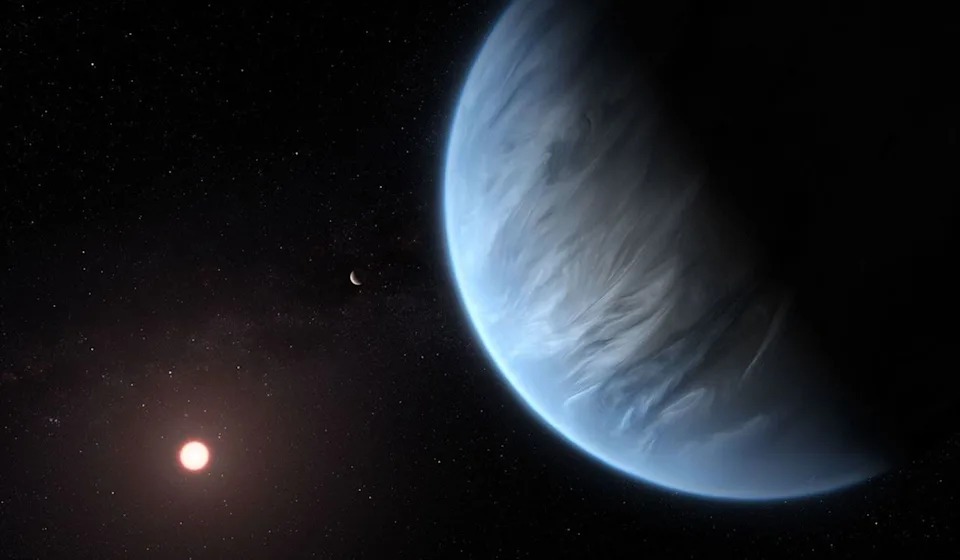
News
September 23, 2025
Is our dream of finding ocean-covered exoplanets drying up?
New simulations suggest sub-Neptune planets may be drier than thought, challenging the "water world" hypothesis and reshaping the search for life beyond...
**Is our dream of finding ocean-covered exoplanets drying up?**
The quest to discover life beyond Earth often conjures images of vast, shimmering oceans on distant planets. For years, scientists have theorized about the existence of "water worlds," exoplanets completely enveloped in water, potentially harboring unique forms of life. However, new research is throwing a wrench into this idyllic picture, suggesting these ocean-covered worlds might be rarer than initially hoped.
A series of cutting-edge simulations has cast doubt on the prevalence of liquid water on sub-Neptune planets, those larger than Earth but smaller than Neptune. These planets, abundant in our galaxy, were once considered prime candidates for being water worlds. The simulations, focusing on the formation and evolution of these planets, indicate they may be significantly drier than previously assumed.
The research challenges the long-held "water world" hypothesis, which posited that sub-Neptunes formed far from their stars, accumulating vast amounts of ice that later melted into global oceans as they migrated inward. The new simulations suggest that many of these planets may form closer to their stars or undergo processes that prevent them from retaining substantial amounts of water.
One key factor highlighted by the simulations is the role of the planet's atmosphere. A dense, hydrogen-rich atmosphere, common in sub-Neptunes, can act like a blanket, trapping heat and preventing the planet from cooling down enough for water to condense and form oceans. Instead, the water remains in the atmosphere as superheated steam, eventually escaping into space.
This finding has significant implications for the search for extraterrestrial life. If water worlds are indeed less common, scientists may need to refocus their efforts on identifying other types of potentially habitable planets. It also underscores the complexity of planetary formation and the diverse range of environments that can exist beyond our solar system.
While this news might seem disheartening, it doesn't mean the dream of finding life on other planets is over. Instead, it refines our understanding of what to look for and where. It encourages scientists to broaden their search and consider planets with different compositions and environments that could still support life. The universe is vast and full of surprises, and this new research serves as a valuable reminder that our understanding of it is constantly evolving. The search for life beyond Earth continues, albeit with a slightly altered map.
The quest to discover life beyond Earth often conjures images of vast, shimmering oceans on distant planets. For years, scientists have theorized about the existence of "water worlds," exoplanets completely enveloped in water, potentially harboring unique forms of life. However, new research is throwing a wrench into this idyllic picture, suggesting these ocean-covered worlds might be rarer than initially hoped.
A series of cutting-edge simulations has cast doubt on the prevalence of liquid water on sub-Neptune planets, those larger than Earth but smaller than Neptune. These planets, abundant in our galaxy, were once considered prime candidates for being water worlds. The simulations, focusing on the formation and evolution of these planets, indicate they may be significantly drier than previously assumed.
The research challenges the long-held "water world" hypothesis, which posited that sub-Neptunes formed far from their stars, accumulating vast amounts of ice that later melted into global oceans as they migrated inward. The new simulations suggest that many of these planets may form closer to their stars or undergo processes that prevent them from retaining substantial amounts of water.
One key factor highlighted by the simulations is the role of the planet's atmosphere. A dense, hydrogen-rich atmosphere, common in sub-Neptunes, can act like a blanket, trapping heat and preventing the planet from cooling down enough for water to condense and form oceans. Instead, the water remains in the atmosphere as superheated steam, eventually escaping into space.
This finding has significant implications for the search for extraterrestrial life. If water worlds are indeed less common, scientists may need to refocus their efforts on identifying other types of potentially habitable planets. It also underscores the complexity of planetary formation and the diverse range of environments that can exist beyond our solar system.
While this news might seem disheartening, it doesn't mean the dream of finding life on other planets is over. Instead, it refines our understanding of what to look for and where. It encourages scientists to broaden their search and consider planets with different compositions and environments that could still support life. The universe is vast and full of surprises, and this new research serves as a valuable reminder that our understanding of it is constantly evolving. The search for life beyond Earth continues, albeit with a slightly altered map.
Category:
Technology